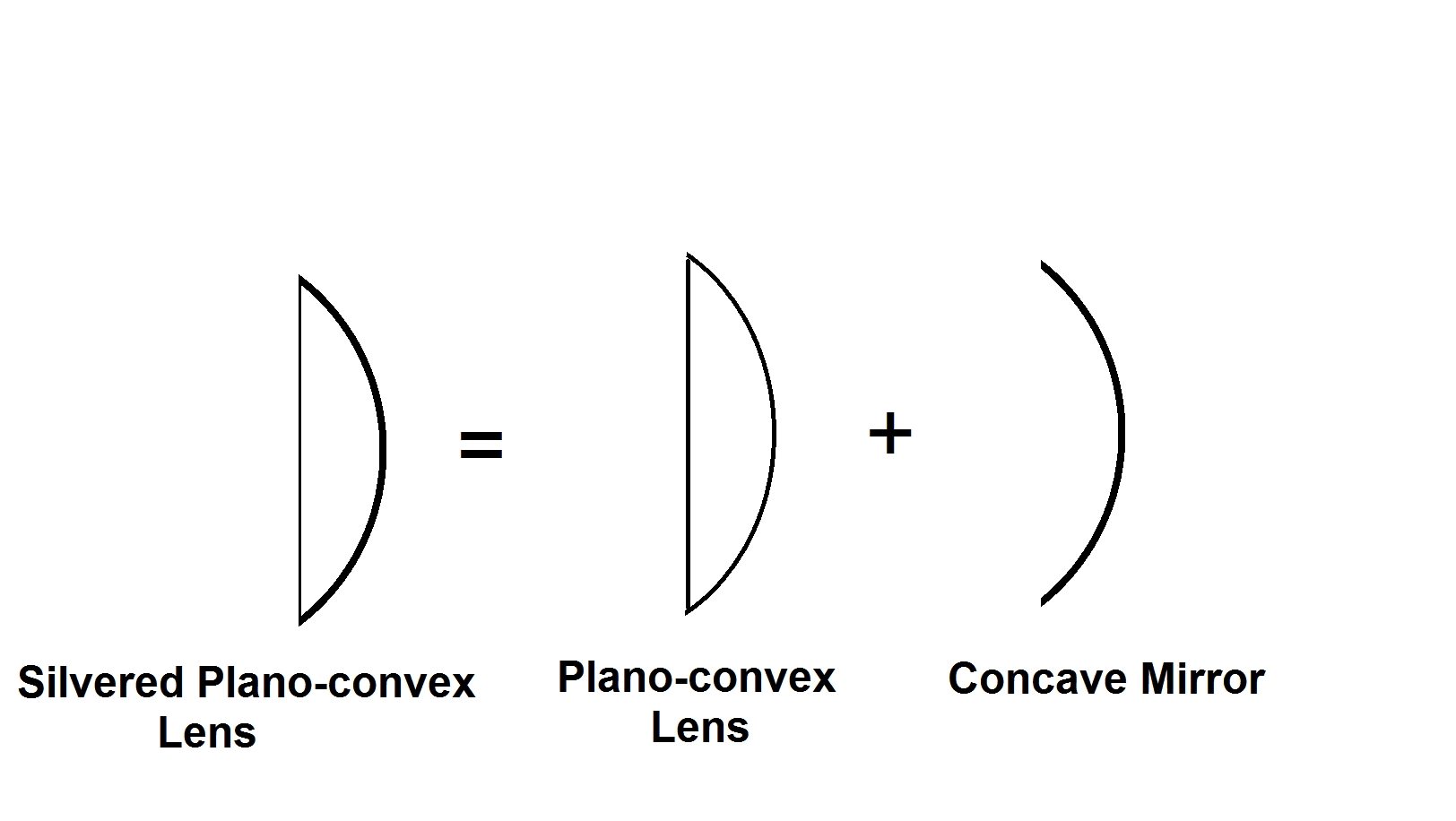
The convex side of a thin plano-convex lens with radius of curvature
(A)
(B)
(C)
(D)
Answer
435.3k+ views
Hint :Find the focal length of the plano-convex lens and then calculate the equivalent focal length of the mirror-lens system to get the image distance from the mirror. To find the focal length of the plano-convex lens, use the lens maker’s formula. It is given by,
Complete Step By Step Answer:
We have here a thin silvered plano-convex lens. So, we can see that the lens becomes a combination of a plano-convex lens and a concave mirror.

Now, to find the image distance first we have to find the focal length of the plano- convex lens using lens maker’s formula. Lens Maker’s formula is given by,
Here, we have
Putting the values we get,
Simplifying we have,
Now, the light passes through this plano- convex lens of focal length
So, the equivalent focal length of this mirror- lens system will be,
Putting the values,
Or,
Or,
So,
So, the lens and mirror will act as an concave mirror having focal length of
Now, from mirror’s formula we know,
So, putting the values
Or,
Or,
So, the image of the object will be at a distance of
Hence, option (B) is correct.
Note :
Complete Step By Step Answer:
We have here a thin silvered plano-convex lens. So, we can see that the lens becomes a combination of a plano-convex lens and a concave mirror.

Now, to find the image distance first we have to find the focal length of the plano- convex lens using lens maker’s formula. Lens Maker’s formula is given by,
Here, we have
Putting the values we get,
Simplifying we have,
Now, the light passes through this plano- convex lens of focal length
So, the equivalent focal length of this mirror- lens system will be,
Putting the values,
Or,
Or,
So,
So, the lens and mirror will act as an concave mirror having focal length of
Now, from mirror’s formula we know,
So, putting the values
Or,
Or,
So, the image of the object will be at a distance of
Hence, option (B) is correct.
Note :
Latest Vedantu courses for you
Grade 11 Science PCM | CBSE | SCHOOL | English
CBSE (2025-26)
School Full course for CBSE students
₹41,848 per year
Recently Updated Pages
Master Class 9 General Knowledge: Engaging Questions & Answers for Success

Master Class 9 English: Engaging Questions & Answers for Success

Master Class 9 Science: Engaging Questions & Answers for Success

Master Class 9 Social Science: Engaging Questions & Answers for Success

Master Class 9 Maths: Engaging Questions & Answers for Success

Class 9 Question and Answer - Your Ultimate Solutions Guide

Trending doubts
Give 10 examples of unisexual and bisexual flowers

Draw a labelled sketch of the human eye class 12 physics CBSE

Differentiate between homogeneous and heterogeneous class 12 chemistry CBSE

Differentiate between insitu conservation and exsitu class 12 biology CBSE

What are the major means of transport Explain each class 12 social science CBSE

What is the difference between resemblance and sem class 12 social science CBSE




